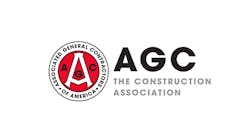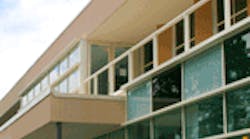Latest from Home
Sponsored
ATLANTA — The ASHRAE headquarters building in Atlanta, which underwent a major renovation in 2008, is one of only six buildings in the state of Georgia to receive United States Green Building Council LEED Platinum certification.
The 34,500-sq.ft. building, built originally in 1965, now acts as a showcase of energy efficiency and sustainability through its living lab, which provides resourses on building, system and equipment performance. The LEED Platinum certification acts as third-party verification of ASHRAE’s efforts to create an environmentally friendly, energy-efficient sustainable workplace.
“While our first objective was to provide a healthy, comfortable and productive environment for our staff, we also wanted to set an example of what can be done to renovate existing buildings,” ASHRAE President Gordon Holness said. “Given that 75% to 80% of all existing buildings will still be around in 2030, our greatest opportunity for a sustainable future is through the upgrade and retrofit of these buildings. It is extremely gratifying to achieve the USGBC’s highest rating and confirm ASHRAE’s leadership and commitment to supporting a sustainable built environment.”
LEED takes into account five key measurements when evaluating new construction: sustainable site development, water savings, energy efficiency, materials selection and indoor environmental quality. Bonus points may be obtained through innovation in design and regional priority.
“The strength of USGBC has always been the collective strength of our leaders in the building industry," said Rick Fedrizzi, president, CEO and founding chair, U.S. Green Building Council. “Given the extraordinary importance of climate protection and the central role of the building industry in that effort, ASHRAE demonstrates their leadership through their LEED Platinum certification of their renovated Headquarters.”
In order to qualify for Platinum certification, ASHRAE took into consideration a number of concerns such as energy use, heat island reduction, water efficient landscaping, and material reuse and water use reduction.
ASHRAE addressed these issues, among others, by installing a cool, white reflective roof membrane to minimize heat island effects; updating the landscaping and eliminating the need for landscaping irrigation; retaining more than 75% of the existing building structure as part of this renovation; and reducing its estimated overall annual water consumption per year by almost 50% by utilizing low-flow fixtures throughout the building. Additionally, the ASHRAE headquarters received bonus points for innovation and design.


